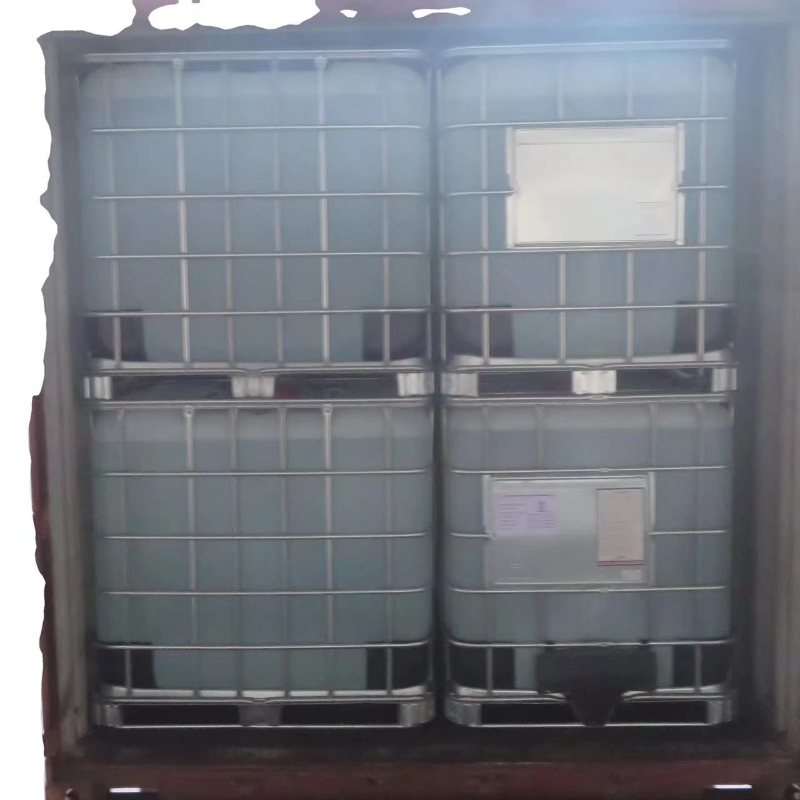-
Categories
-
Pharmaceutical Intermediates
-
Active Pharmaceutical Ingredients
-
Food Additives
- Industrial Coatings
- Agrochemicals
- Dyes and Pigments
- Surfactant
- Flavors and Fragrances
- Chemical Reagents
- Catalyst and Auxiliary
- Natural Products
- Inorganic Chemistry
-
Organic Chemistry
-
Biochemical Engineering
- Analytical Chemistry
- Cosmetic Ingredient
-
Pharmaceutical Intermediates
Promotion
ECHEMI Mall
Wholesale
Weekly Price
Exhibition
News
-
Trade Service
*Only for medical professionals to read for reference.
CT signs are very important for reading.
We will teach you how to identify the signs of cavitation and floating bubbles in the lungs
.
Foreword CT signs are very important for image reading.
In many cases, the typical signs can make the diagnosis less detours! CT learning must have pictures, and the signs described in the text are often obscure and often meaningless! Today, I will share with you a very useful sign: the sign of hollow floating air bubbles in the lungs
.
01 Gas-liquid level of lung abscess The picture below is a typical lung abscess, with gas-liquid level in the cavity! The basic principle of Newton's universal gravitation tells us that when air goes to a high place, liquid flows to a low place, so a gas-liquid level is formed! Figure 102 The sign of hollow floating bubbles in the lungs (the picture below) is simply the existence of abnormalities.
Do not take Newtonian gravity into consideration (on the surface): the distribution of gas has nothing to do with gravity, no A gas-liquid level is formed, and the air is suspended in the liquid! Figure 2 What is the pathology of this patient? Actinomycete infection (picture below)! The hollow floating bubble sign is highly indicative of pulmonary actinomycosis! Figure 3 The bottom image is also the sign of hollow floating air bubbles in the lungs, and the final diagnosis is also pulmonary actinomycosis! Figure 4 Why does the air in the pulmonary actinomycosis cavity violate Newton's universal gravitation? Some scholars speculate that for pulmonary actinomycosis, the low-density non-enhanced substance in the cavity is actually necrotic tissue + a large number of actinomycetes + sulfur particles, which has poor fluidity; the gas density in the cavity may be caused by sulfur particles and sulphur particles.
Microabscesses of nematodes, or remaining dilated bronchi; it can be seen that the liquid in the cavity is difficult to flow, and the gas is not easy to flow, so it will not form a gas-liquid level
.
For example, if we drink water, the stomach can form a gas-liquid level, but when we eat, it is difficult to form a gas-liquid level in the stomach (picture below)
.
Figure 503: Atypical pulmonary voided air bubble sign.
Some scholars believe that it is also a hollow air bubble sign.
I don't think it is very typical.
This sign is not uncommon in clinical practice! Figure 604 Imaging manifestations of pulmonary actinomycosis.
Many times, the imaging of pulmonary actinomycosis has no specificity! In many cases, it looks like normal pneumonia (pictured below)
.
Figure 7 Sometimes it looks like lung cancer (below), and it can't be distinguished by PET-CT at your own expense! Figure 8 sometimes invades the chest wall (below), and it is difficult to distinguish it from tumors and tuberculosis
.
Figure 905 Pulmonary actinomycosis actinomycetes are G+ bacilli, anaerobic, or microaerobic! Bacteria that can survive without oxygen are generally quite annoying, just like a stone in a pit, smelly and hard! Colonization in the mouth, colon, and vagina! Therefore, if there are no sulfur particles, there is little diagnostic value for actinomycetes in sputum and bronchoalveolar lavage fluid! The infection is usually Israeli actinomycetes! Lung actinomycete infection is often a mixed infection of multiple microorganisms, just like a stone in a pit! No one is afraid of the stones in the pit! Actinomycetes often infect people with normal immunity.
Alcoholism and poor oral hygiene are high-risk factors.
The proportion of men who are infected is three times that of women
.
Respiratory system infections are often caused by aspiration, or spread of neck and abdominal infections
.
As a smelly and hard Maokeng stone, actinomycetes easily invade the chest wall and can cause bronchial skin fistulas (actinomycetes pass through the bronchus and break through the skin), can cause lymphadenopathy, and it is difficult to distinguish from lung cancer and tuberculosis
.
Diagnosis requires pathology! Penicillin is the first choice for treatment.
If you don't have treatment, you basically have to see the king! For penicillin allergy, choose tetracycline, erythromycin, and clindamycin
.
The course of treatment often takes more than 1 year! ▎Summary: Actinomycetes are smelly and hard pit stones.
Diagnosis is very difficult.
The sign of hollow floating air bubbles is highly indicative of pulmonary actinomycosis! References: [1] Wang Chen et al.
, PCCM tutorial.
[2] Zhang Jin'e, et al.
Imaging features of thoracic actinomycosis[J].
China Medical Imaging Technology, 2009.
CT signs are very important for reading.
We will teach you how to identify the signs of cavitation and floating bubbles in the lungs
.
Foreword CT signs are very important for image reading.
In many cases, the typical signs can make the diagnosis less detours! CT learning must have pictures, and the signs described in the text are often obscure and often meaningless! Today, I will share with you a very useful sign: the sign of hollow floating air bubbles in the lungs
.
01 Gas-liquid level of lung abscess The picture below is a typical lung abscess, with gas-liquid level in the cavity! The basic principle of Newton's universal gravitation tells us that when air goes to a high place, liquid flows to a low place, so a gas-liquid level is formed! Figure 102 The sign of hollow floating bubbles in the lungs (the picture below) is simply the existence of abnormalities.
Do not take Newtonian gravity into consideration (on the surface): the distribution of gas has nothing to do with gravity, no A gas-liquid level is formed, and the air is suspended in the liquid! Figure 2 What is the pathology of this patient? Actinomycete infection (picture below)! The hollow floating bubble sign is highly indicative of pulmonary actinomycosis! Figure 3 The bottom image is also the sign of hollow floating air bubbles in the lungs, and the final diagnosis is also pulmonary actinomycosis! Figure 4 Why does the air in the pulmonary actinomycosis cavity violate Newton's universal gravitation? Some scholars speculate that for pulmonary actinomycosis, the low-density non-enhanced substance in the cavity is actually necrotic tissue + a large number of actinomycetes + sulfur particles, which has poor fluidity; the gas density in the cavity may be caused by sulfur particles and sulphur particles.
Microabscesses of nematodes, or remaining dilated bronchi; it can be seen that the liquid in the cavity is difficult to flow, and the gas is not easy to flow, so it will not form a gas-liquid level
.
For example, if we drink water, the stomach can form a gas-liquid level, but when we eat, it is difficult to form a gas-liquid level in the stomach (picture below)
.
Figure 503: Atypical pulmonary voided air bubble sign.
Some scholars believe that it is also a hollow air bubble sign.
I don't think it is very typical.
This sign is not uncommon in clinical practice! Figure 604 Imaging manifestations of pulmonary actinomycosis.
Many times, the imaging of pulmonary actinomycosis has no specificity! In many cases, it looks like normal pneumonia (pictured below)
.
Figure 7 Sometimes it looks like lung cancer (below), and it can't be distinguished by PET-CT at your own expense! Figure 8 sometimes invades the chest wall (below), and it is difficult to distinguish it from tumors and tuberculosis
.
Figure 905 Pulmonary actinomycosis actinomycetes are G+ bacilli, anaerobic, or microaerobic! Bacteria that can survive without oxygen are generally quite annoying, just like a stone in a pit, smelly and hard! Colonization in the mouth, colon, and vagina! Therefore, if there are no sulfur particles, there is little diagnostic value for actinomycetes in sputum and bronchoalveolar lavage fluid! The infection is usually Israeli actinomycetes! Lung actinomycete infection is often a mixed infection of multiple microorganisms, just like a stone in a pit! No one is afraid of the stones in the pit! Actinomycetes often infect people with normal immunity.
Alcoholism and poor oral hygiene are high-risk factors.
The proportion of men who are infected is three times that of women
.
Respiratory system infections are often caused by aspiration, or spread of neck and abdominal infections
.
As a smelly and hard Maokeng stone, actinomycetes easily invade the chest wall and can cause bronchial skin fistulas (actinomycetes pass through the bronchus and break through the skin), can cause lymphadenopathy, and it is difficult to distinguish from lung cancer and tuberculosis
.
Diagnosis requires pathology! Penicillin is the first choice for treatment.
If you don't have treatment, you basically have to see the king! For penicillin allergy, choose tetracycline, erythromycin, and clindamycin
.
The course of treatment often takes more than 1 year! ▎Summary: Actinomycetes are smelly and hard pit stones.
Diagnosis is very difficult.
The sign of hollow floating air bubbles is highly indicative of pulmonary actinomycosis! References: [1] Wang Chen et al.
, PCCM tutorial.
[2] Zhang Jin'e, et al.
Imaging features of thoracic actinomycosis[J].
China Medical Imaging Technology, 2009.







